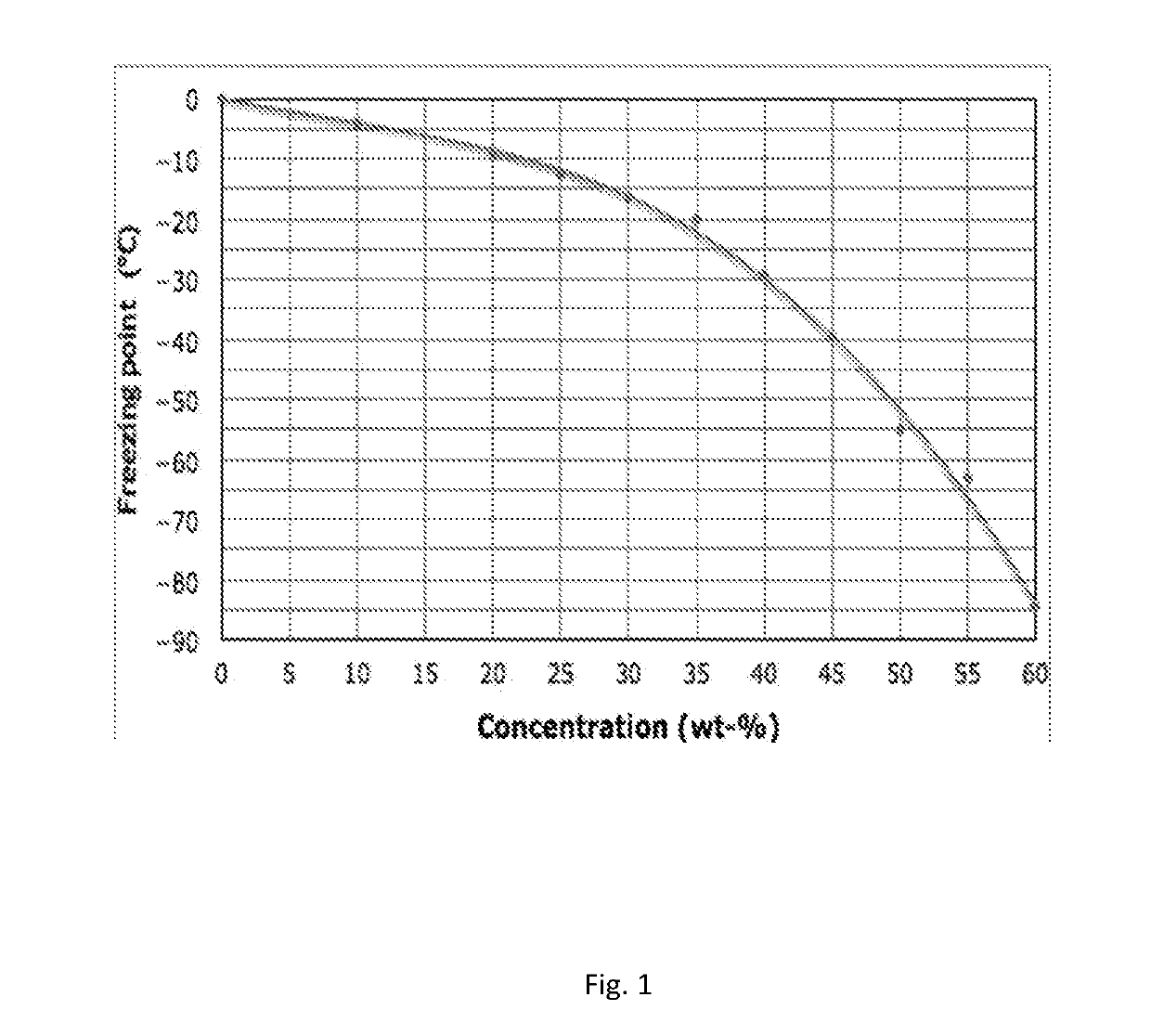Use of aqueous solution of organic ammonium carboxylate in preventing dusting of fine material and combination of an aqueous solution of organic ammonium carboxylate and fine material
a technology which is applied in the field of use of aqueous solution of organic ammonium carboxylate in preventing fine material dusting and combination of an aqueous solution of organic ammonium carboxylate and fine material, can solve the problems of serious health problems of mineral dust and street dust, damage to equipment and vehicles used in mining industry,
- Summary
- Abstract
- Description
- Claims
- Application Information
AI Technical Summary
Benefits of technology
Problems solved by technology
Method used
Image
Examples
example 1
[0047]An ionogenic solution for controlling mineral dust formation was prepared by mixing 1 mole of formic acid (99%) with 1 mole of monoethanolamine (99%). Distilled water was added to the fluid mixture in order to made 3-5% by weight aqueous solution.
[0048]The freezing point of the solution was below −5° C., the electrical conductivity of the fluid was 61 mS / cm at 26° C., and pH of the fluid was 7.55 (measured directly from the solution).
example 2
[0049]An aqueous solution was prepared by mixing 1 mole of formic acid (99%) with 1 mole of monoethanolamine (99%). Distilled water was added to the fluid mixture in order to made 3-5 by weight solution in water.
[0050]The freezing point of the solution was below −5° C., the Brookfield DV-I viscosity (20 rpm) was 10 mPas at −20° C., 10 mPas at −10° C., 10 mPas at 0° C., and Bohlin VOR viscosity (shear rate 23.1 1 / s) was 4 mPas at 10° C., 3 mPas at 20° C., 2 mPas at 40° C., and 1.5 mPas at 60° C. The electrical conductivity of the fluid was 65 mS / cm at 26° C., and pH of the fluid was 7.54 (measured directly from the solution).
example 3
[0051]Solutions in examples 6 and 7 in the below tables have been made in the same way as presented in examples 1-2, that is, by mixing 1 mole of an ammonium cation source and 1 mole of a carboxyl anion source (unless otherwise shown) together for obtaining a concentrated fluid and then adding water to the concentrated fluid, for obtaining diluted solutions.
TABLE 1In table 1 formation of possible precipitates from fluids and dilutedsolutions obtained from fluids is shown. Temperature was 20-25° C.fluid Wt-% from solutionpH of 2%Code / exfluid10090806040205solutionEAE / 6ethanolamine / ClearClearClearClearClearClearClear6.8acetic acidEAM / 7ethanolamine / ClearClearClearClearClearClearClear3.7formic acid
TABLE 2The fluid and solution samples from selected examples of table 1 were subjected to chillingto a temperature of +4° C. and then to further cooling to a temperature of −20° C.In these temperatures the possible turbidity, precipitation of these samples was observed.ex10090806040205Temperatu...
PUM
| Property | Measurement | Unit |
|---|---|---|
| freezing point | aaaaa | aaaaa |
| freezing point | aaaaa | aaaaa |
| freezing point | aaaaa | aaaaa |
Abstract
Description
Claims
Application Information
 Login to View More
Login to View More - R&D
- Intellectual Property
- Life Sciences
- Materials
- Tech Scout
- Unparalleled Data Quality
- Higher Quality Content
- 60% Fewer Hallucinations
Browse by: Latest US Patents, China's latest patents, Technical Efficacy Thesaurus, Application Domain, Technology Topic, Popular Technical Reports.
© 2025 PatSnap. All rights reserved.Legal|Privacy policy|Modern Slavery Act Transparency Statement|Sitemap|About US| Contact US: help@patsnap.com

